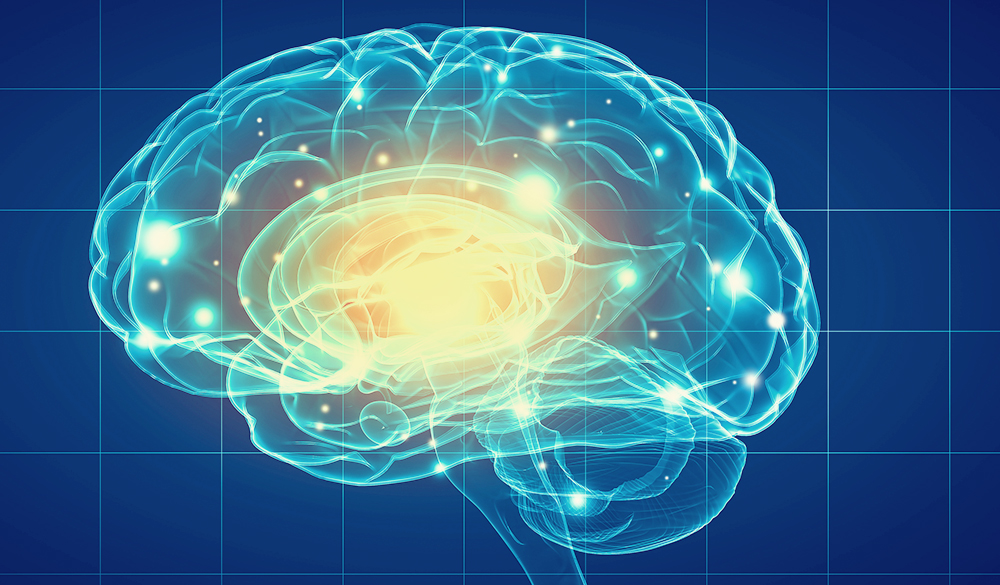Self-care is always a trending topic in the health world. Practitioners and patients alike need to be informed of easy strategies that assist their body to cope with living in such a fast-paced, stress-filled world. Supporting balance within the autonomic nervous system via vagal nerve stimulation is a an easy and sustainable self-care strategy.
Managing sympathetic nervous system overdrive
When our body faces a high-stress situation, the sympathetic nervous system (SNS) kicks into drive. This response is an ancient survival mechanism of the autonomic nervous system (ANS), triggering a cascade of stress hormones that produce physiological changes to prime the body to fight or flee from a threat. While this stress response can be triggered by a physical danger, it can also be brought on, and maintained, by emotional and psychological stress such as work deadlines, money problems and lack of sleep.[1]
Our ability to quickly turn on fight or flight has benefits for our survival, however long-term activation, and being exposed to chronic stress, can have a detrimental impact on our health.
The impacts of chronic sympathetic nervous stimulation may contribute to:
- altered hypothalamic-pituitary-adrenal function and increased cortisol levels[2]
- impaired cognitive performance[3]
- metabolic syndrome, central adiposity and insulin resistance[4]
- anxiety, depression and addiction[5]
- sleep disturbances[6]
- digestive issues.[7]
Interestingly, a study conducted at the University of Miami found that women with high sympathetic activity and concomitant anger, anxiety or depression had children who exhibited similar symptoms.[8] Therefore, limiting stress and supporting parasympathetic balance while pregnant is likely important.
Supporting parasympathetic nervous system balance
The parasympathetic nervous system (PNS) is the opposite arm of the ANS and triggers ‘rest and digest’ activities. When activated, the body concentrates on digesting food, relaxing muscles, regulating respiration and heart rate, and producing regulatory hormones. However, it can be easily overridden by SNS activity.
The vagus nerve (previously known as the pneumogastric nerve) is the major nerve controlling the parasympathetic division of the ANS. Healthy vagal tone supports the ability of the PNS to bounce back from SNS activity, providing restorative and regenerative energy.
Vagus nerve stimulation can be employed to increase tone of the vagus nerve. This was first identified in the 1880s, when physicians observed that massage of the carotid artery in the cervical region of the neck could suppress seizures due to crude stimulation of the vagus nerve.[9]
Strategies to balance autonomic function
A variety of practises could improve and rebalance the function of the ANS.
Exposure to cold temperature
- Cold habituation lowers sympathetic activation and causes a shift toward increased parasympathetic activity.[10]
- This can be as simple as blasting cold water at the end of your shower.
Meditation, yoga and mindfulness
- Mindfulness meditation is known to improve parasympathetic functions in pregnant women and is a powerful modulator of the SNS during pregnancy.[11]
- The relaxing nature of these practises is bound to benefit the ANS of all!
Singing, humming and gargling
- The vagus nerve is connected to your vocal cords and the muscles at the back of your throat. Singing, humming, chanting and gargling can activate these muscles and stimulate your vagus nerve, increasing its tone.[12]
Diaphragmatic and deep breathing
- Controlled, slow breathing appears to be an effective means of preserving autonomic function and has been associated with longevity in the general population.[13]
- An example of what to do can be found here
References
- Wehrwein EA, Orer HS, Barman SM. Overview of the anatomy, physiology, and pharmacology of the autonomic nervous system. Compr Physiol 2016;13;6(3):1239-1278. [Abstract]
- Teixeria RR, Diaz, MM, da Silva Santos TV, et al. Chronic stress Induces a hyporeactivity of the autonomic nervous system in response to acute mental stressor and impairs cognitive performance in business executives. PLoS One 2015;10(3):e0119025. [Full Text]
- Giuliano RJ, Gatzke-Kopp LM, Roos LE, et al. Resting sympathetic arousal moderates the association between parasympathetic reactivity and working memory performance in adults reporting high levels of life stress. Psychophysiology 2017;54(8):1195-1208. [Full Text]
- Thorp AA, Schlaich MP. Review Article: Relevance of sympathetic nervous system activation in obesity and metabolic syndrome. J Diabetes Res 2015;2015:341583. [Full Text]
- Alvares GA, Quintana DS, Hickie IB, et al. Autonomic nervous system dysfunction in psychiatric disorders and the impact of psychotropic medications: a systematic review and meta-analysis. J Psychiatry NeuroSci 2016;41(2):89-104. [Full Text]
- [6] Hirotsu C, Tufik S, Levy Anderson M. Interactions between sleep, stress, and metabolism: From physiological to pathological conditions. Sleep Sci 2015;8(3):143-152. [Full Text]
- Browing KN, Travagli RA. Central nervous system control of gastrointestinal motility and secretion and modulation of gastrointestinal functions. Compr Physiol 2014;4(4):1339-1368. [Full Text]
- Field T, Diego M. Vagal activity, early growth and emotional development. Infant Behav Dev 2008;31(3):361-373. [Full Text]
- Lanksa DJ. J.L. Corning and vagal nerve stimulation for seizures in the 1880s. Neurology 2002;58(3):452-459. [Abstract]
- Mäkinen TM, Mäntysaari M, Pääkkönen T, et al. Autonomic nervous function during whole-body cold exposure before and after cold acclimation. Aviat Space Environ Med 2008;79(9):875-882. [Abstract]
- Muthukrishnan S, Jain R, Kohli S, et al. Effect of mindfulness meditation on perceived stress scores and autonomic function tests of pregnant Indian women. J Clin Diagn Res 2016;10(4):CC05-CC08. [Full Text]
- Vickhoff B, Malmgren H, Astrom R, et al. Music structure determines heart rate variability of singers. Front Psychol 2013;4:334. [Full Text]
- Russo MA, Santarelli DM, O’Rourke D. The physiological effects of slow breathing in the healthy human. Breathe (Sheff) 2017;13(4):298-309. [Full Text]
DISCLAIMER:
The information provided on FX Medicine is for educational and informational purposes only. The information provided on this site is not, nor is it intended to be, a substitute for professional advice or care. Please seek the advice of a qualified health care professional in the event something you have read here raises questions or concerns regarding your health.



